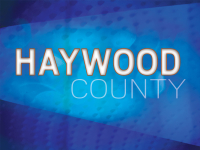Big and wild

Big and wild can’t be big and wild if your mind and heart are small.
A “real” public meeting — as in announced and on the docket — took place in Asheville on Sept. 20 as Buncombe County Commissioners listened to pros and cons regarding the proposed Craggies Wilderness Area and Big Ivy. The result was a resounding success for the local “Friends of Big Ivy” group and a diverse assemblage of environmental groups and local citizens who love “their” wilderness.
It was a kind of about-face from other county commissioners’ meetings across Western North Carolina regarding wilderness areas and the new Nantahala and Pisgah forests plan revisions. One wonders what the difference could be.
The first thing that pops into mind is that there are undoubtedly more Prius-driving, bike-riding, citified folks in Buncombe County who would rather pet a deer than shoot it. But if you look at the membership roster of Friends of Big Ivy and look at the “bios” of those who spoke at the Buncombe County Commissioners meeting, you might see a different cross-section.
Several counties across Western North Carolina, through their elected commissioners, have passed resolutions decrying “wilderness” designations. I wasn’t present at all those commissioners’ meetings but I did make one and from what I can tell it followed closely the modus operandi of the others — no public hearing announced — a motion placed and then a vote at the same meeting.
The one I attended was in Haywood County on Feb. 2. Without a single person to speak fer or agin, that august body unanimously approved a “non-binding” resolution that opposed all of the Pisgah National Forest Land Management Plan Revision — nothing like covering all your bases.
Related Items
Surprisingly, when people are notified beforehand and public hearings are called and both sides are guaranteed a platform, outcomes are often different. There is nothing wrong with people having different opinions, but it is important when actions called for will impact all users that all users have the opportunity to voice their opinions.
Wilderness is one of those amorphous terms that give people pause when it comes to forming opinions. What is a wilderness? What does it mean? Can I go there?
Well, to start with, of course you can. Most activities that don’t require a vehicle like hunting, fishing, hiking, camping, horseback riding, birding, photography and more are allowed. And wilderness regulations can be waived for a multitude of reasons: to fight wildfire; search and rescue; insect control; restocking of threatened fauna; livestock grazing and the use of motorized vehicles to support such activities plus many uses that were “grandfathered” in, in certain areas before they became wilderness.
So there’s no lock it up and throw away the key. That paradigm should be filed in 13 along with the made-up concept that environmentalists and/or wilderness aficionados view wilderness as some kind of transcendental nirvana, untrammeled by humans, which should remain free of all human contamination. Most wilderness enthusiasts I know want to be there — want to recreate there, maybe in a more intimate setting than 4X4s and RVs — but they want wilderness around, not only so they can enjoy it but so their children and their children’s children can enjoy it.
Wilderness is real. Wilderness is to be touched; to be breathed in; to be reveled in. It is not some kind of esoteric, unattainable ideal. To understand wilderness is to understand what Thomas Berry meant when he said, “The universe is a communion of subjects, not a collection of objects.” Wilderness enhances that communion.
(Don Hendershot is a writer and naturalist. He can be reached a This email address is being protected from spambots. You need JavaScript enabled to view it..)









